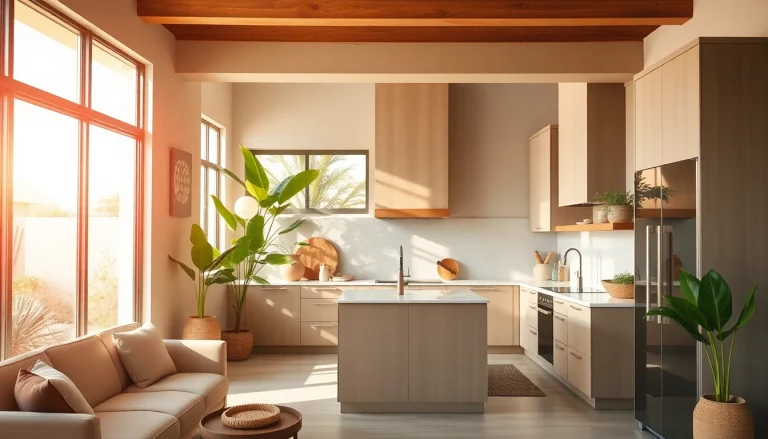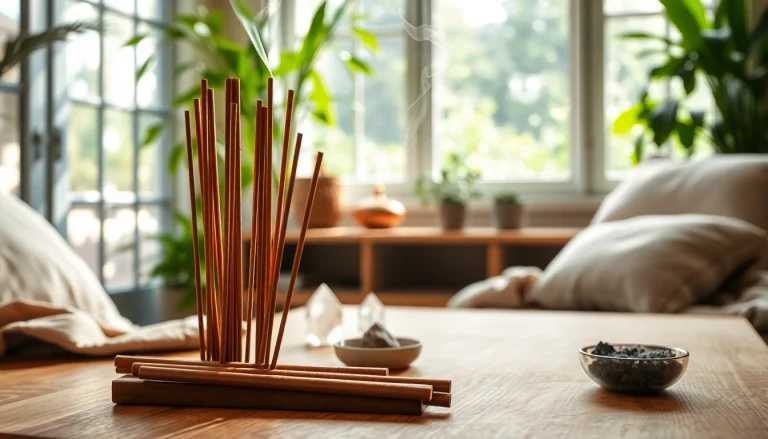Understanding Interior Painting
What is Interior Painting?
Interior painting involves applying paint to the surfaces of a home’s interior, including walls, ceilings, and trim. This practice not only enhances the aesthetic appeal of a space but also serves to protect surfaces from damage. The choice of color, type of paint, and application technique can transform a room, reflecting personal style and improving overall ambiance. For homeowners considering a refresh, interior painting can be an impactful and rewarding project.
Common Types of Interior Paint
Choosing the right paint for your interior project is crucial. The main categories of interior paints are:
- Latex Paint: Water-based, easy to clean, with low odor and quick drying time.
- Oil-Based Paint: Provides a durable finish but requires solvents for cleanup and longer drying times.
- Low-VOC and No-VOC Paints: Eco-friendly options that emit fewer volatile organic compounds, improving indoor air quality.
- Chalk Paint: Popular for creating a matte, vintage finish, especially on furniture.
- Eggshell and Satin Finishes: Offer a slight luster, suitable for living rooms and bedrooms, as they are more stain-resistant than flat paints.
Choosing the Right Paint Finish
The finish you select is instrumental in achieving both the desired look and functionality of the paint. Finishes typically range from flat to high-gloss, each serving its unique purpose:
- Flat Finish: Hides imperfections well but is less durable and harder to clean.
- Semi-Gloss: Offers durability and washability, making it ideal for trim and high-traffic areas.
- Gloss: Provides a shiny finish that is highly resistant to moisture, suitable for bathrooms or kitchens.
Preparing for Your Interior Painting Project
Assessing Your Space
Before embarking on your painting project, a thorough assessment of your space is essential. Consider the following steps:
- Evaluate Lighting: Natural and artificial light can influence how colors appear. Observe your space at different times of the day.
- Check Surface Condition: Inspect walls for cracks, holes, and previous paint jobs which may need repairs before painting.
- Define Your Goals: Are you looking to create a cozy atmosphere, modernize the space, or highlight architectural features? Establish clear goals to guide your color choices.
Gathering Necessary Tools and Materials
Creating a comprehensive checklist will streamline your painting process. Essential tools and materials include:
- Paint brushes and rollers
- Painter’s tape
- Drops cloths or tarps
- Paint tray and liners
- Primer (if necessary)
- Sandpaper and patching materials
- Ladder or scaffolding for high areas
Surface Preparation Techniques
Proper surface preparation can significantly improve the results of your painting project. Key techniques include:
- Cleaning: Dust and dirt will prevent paint adhesion; clean the surfaces thoroughly before beginning.
- Repairing: Use spackling paste or putty to fill in cracks and holes. Sand down any rough areas to create a smooth surface.
- Priming: Consider applying a primer, especially on bare or repaired surfaces. This enhances paint adhesion and coverage.
Step-by-Step Interior Painting Process
Effective Painting Techniques
Executing the painting process efficiently is key to achieving a professional look. Follow these time-tested techniques:
- Start with the Ceiling: Always paint the ceiling first to avoid drips on newly painted walls.
- Use Painter’s Tape: Apply tape on edges where walls meet ceilings, trim, or other surfaces to ensure clean lines.
- Work in Sections: Divide the wall into manageable sections. Paint one section at a time for improved focus and consistency.
Color Application Strategies
When it comes to applying color, consider these tips for uniformity and effectiveness:
- Use a Roller for Larger Areas: Rollers cover large areas quickly. Use a brush for corners and edges to ensure even coverage.
- Apply Multiple Coats: Depending on the color and finish, multiple coats may be necessary to achieve an even look. Allow adequate drying time between coats.
- Follow the Right Order: Paint walls first, then trim, with doors last. This sequence minimizes touch-ups.
Final Touches and Clean-Up
Once you have finished painting, it’s time for final touches:
- Removing Painter’s Tape: Remove tape while the paint is slightly wet to prevent peeling.
- Inspect for Missed Spots: Check for any areas that may need additional paint or touch-ups.
- Clean Up: Dispose of brushes and rollers properly and clean any remaining tools for future use.
Interior Painting Cost Insights
Factors Affecting Painting Costs
Understanding what influences the cost of interior painting can help you budget effectively. Major factors include:
- Room Size: Smaller rooms typically cost less to paint than larger areas.
- Height of Walls: Extra cost may be incurred if special equipment is needed to reach high ceilings.
- Type of Paint: Higher-quality paints generally have a higher price but can save money in the long term due to durability.
- Labor Costs: If hiring professional painters, labor costs can vary based on expertise and location.
Average Costs by Room Size
The following table outlines average costs associated with painting various room sizes:
| Room Type | Size (Sq. Ft.) | Average Cost |
|---|---|---|
| Bathroom | 20 – 100 | $60 – $400 |
| Bedroom | 200 – 310 | $600 – $1,240 |
| Kitchen | 200 – 360 | $600 – $1,320 |
| Living Room | 300 – 400 | $900 – $1,600 |
Cost Comparison: DIY vs. Professional Services
When deciding between DIY painting or hiring professionals, consider the following:
- DIY: Typically cheaper but requires significant effort, time, and skill, especially for larger projects.
- Professional Services: Higher upfront cost, but saves time and guarantees a quality finish.
Enhancing Your Space with Interior Painting
Popular Color Trends for 2023
Staying updated on color trends can significantly impact your painting project. Some popular color trends include:
- Earthy Tones: Colors inspired by nature, such as terracotta, sage green, and muted blues.
- Bold Accent Colors: Bright hues like royal blue and deep green used on singular walls to create focal points.
- Neutral Palettes: Timeless colors such as grays and creamy whites for a clean, modern look.
Interior Painting for Home Staging
For homeowners looking to sell, thoughtful interior painting can make a significant difference:
- Neutral Colors: Using neutral tones can help potential buyers envision their own decor.
- Highlighting Features: Use paint to emphasize architectural features that add value to your home.
- Fresh and Clean: A fresh coat of paint makes a home feel more inviting and well-maintained.
Unique Techniques: Accent Walls and Patterns
Consider employing unique painting techniques to add character to your space:
- Accent Walls: A single wall painted in a bold color can create depth and interest.
- Stripes and Patterns: Techniques such as stenciling or using painter’s tape can add visual texture.
- Ombre and Gradient Effects: For a modern twist, try blending colors for an ombre effect.








